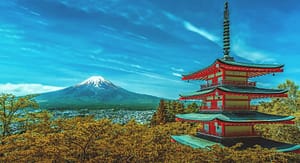Mystery only adds to the reputation of the Japanese nightlife; those who have lived and worked there talk of it with reverence. It varies from district to district: in Shinjuku-ni-chome bars are nestled away down back allies or stacked like blocks; in Roppongi foreigners and locals dance till the early hours in mega clubs or sing their lungs out in Karaoke bars; in Shibuya-Ku the alternative clubber will find their haven in house or indie venues. Every area has something; the difficulty for many tourists is finding it.
Bars in Japan
Japan has more than 80,000 bars, and at least 25,000 of these are in Tokyo alone. Finding them can be difficult, and potentially dangerous if you intend to wander until you find one and easily slip into one of Tokyo’s red light districts, such as Kabuki-Cho in Shinjuku. As ever on any night out, keep your wits about you.
A way of getting round this is to go on a Japanese version of a bar crawl; not only for foreigners, these evenings attract Japanese students and young professionals alike. The fact that they end at 11.30pm can be seen as the ideal easy evening or a good way to start a big night.
Clubbing in Japan
There are many of these crawls in Roppongi, which is renowned for its mega clubs; attractive to foreigners and Japanese alike. Womb is perhaps the most famous, stretching across four floors with flashing strobes and pulsing sound systems and an array of foreign and Japanese DJs alike. Alongside the regular clubs, Roppongi also boasts many karaoke clubs
If mega clubs aren’t your scene, check out the Shibuya-Ku district for more intimate bars and clubs. Eleven, distance-wise, is not far from the mega-clubs of Roppongi, however its clientele is quite different, some would say classier. Unit is a smaller venue than Womb with a capacity of 600, and caters to the Indie/alternative crowd, with live music events as well as club nights. Check out their electronic booking system. Dommune is a tiny venue that gets big names, such as SBTRKT and caters to Japanese house lovers.
Many clubs, although not in Roppongi or Shibuya-Ku, run free shuttle buses from these party destinations. AgeHa, another of Tokyo’s infamous mega-clubs is in the bay area Shin-Kiba but the clubs puts on buses from Roppongi. With a capacity of 2400, various different rooms, a poolside stage and a pupose built beach (in the summer), ageHa is definitely an experience.
LGBT nightlife
Tokyo’s most prominent gay clubs and scene can be found inShinjuku-ni-chome. Though the narrow streets and tiny, sometimes stacked, bars may suggest a subdued scene, Toyko has an active LGBT community.

